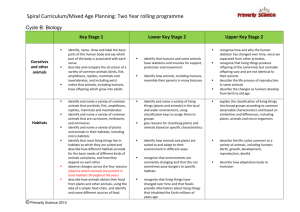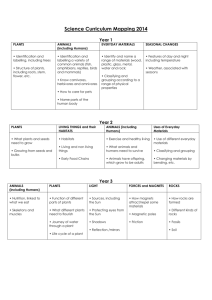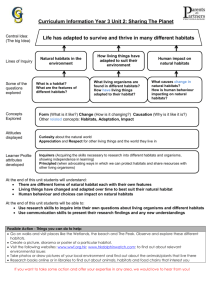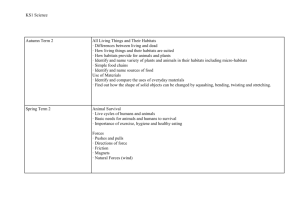Year 3 Unit 2 - Sharing The Planet 2015-16
advertisement
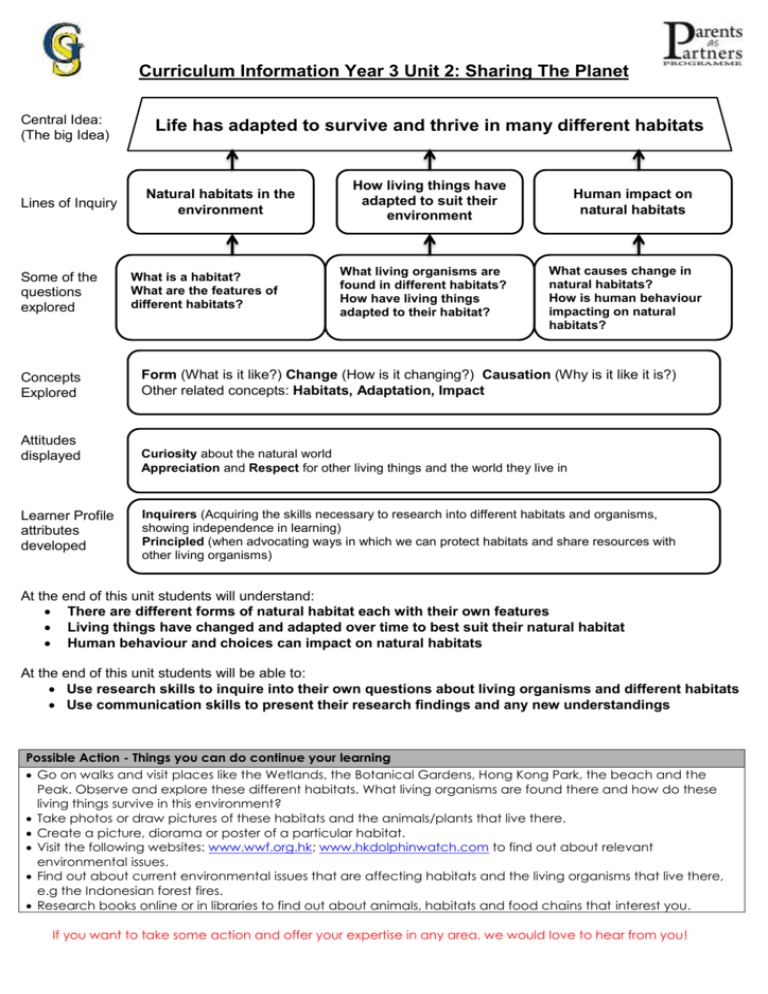
Curriculum Information Year 3 Unit 2: Sharing The Planet Central Idea: (The big Idea) Lines of Inquiry Life has adapted to survive and thrive in many different habitats Natural habitats in the environment How living things have adapted to suit their environment Human impact on natural habitats Human impact on natural habitats. (Causation / Change) Some of the questions explored Concepts Explored Attitudes displayed Learner Profile attributes developed What is a habitat? What are the features of different habitats? What living organisms are found in different habitats? How have living things adapted to their habitat? What causes change in natural habitats? How is human behaviour impacting on natural habitats? Form (What is it like?) Change (How is it changing?) Causation (Why is it like it is?) Other related concepts: Habitats, Adaptation, Impact Curiosity about the natural world Appreciation and Respect for other living things and the world they live in Inquirers (Acquiring the skills necessary to research into different habitats and organisms, showing independence in learning) Principled (when advocating ways in which we can protect habitats and share resources with other living organisms) At the end of this unit students will understand: There are different forms of natural habitat each with their own features Living things have changed and adapted over time to best suit their natural habitat Human behaviour and choices can impact on natural habitats At the end of this unit students will be able to: Use research skills to inquire into their own questions about living organisms and different habitats Use communication skills to present their research findings and any new understandings Possible Action - Things you can do continue your learning Go on walks and visit places like the Wetlands, the Botanical Gardens, Hong Kong Park, the beach and the Peak. Observe and explore these different habitats. What living organisms are found there and how do these living things survive in this environment? Take photos or draw pictures of these habitats and the animals/plants that live there. Create a picture, diorama or poster of a particular habitat. Visit the following websites: www.wwf.org.hk; www.hkdolphinwatch.com to find out about relevant environmental issues. Find out about current environmental issues that are affecting habitats and the living organisms that live there, e.g the Indonesian forest fires. Research books online or in libraries to find out about animals, habitats and food chains that interest you. If you want to take some action and offer your expertise in any area, we would love to hear from you!




